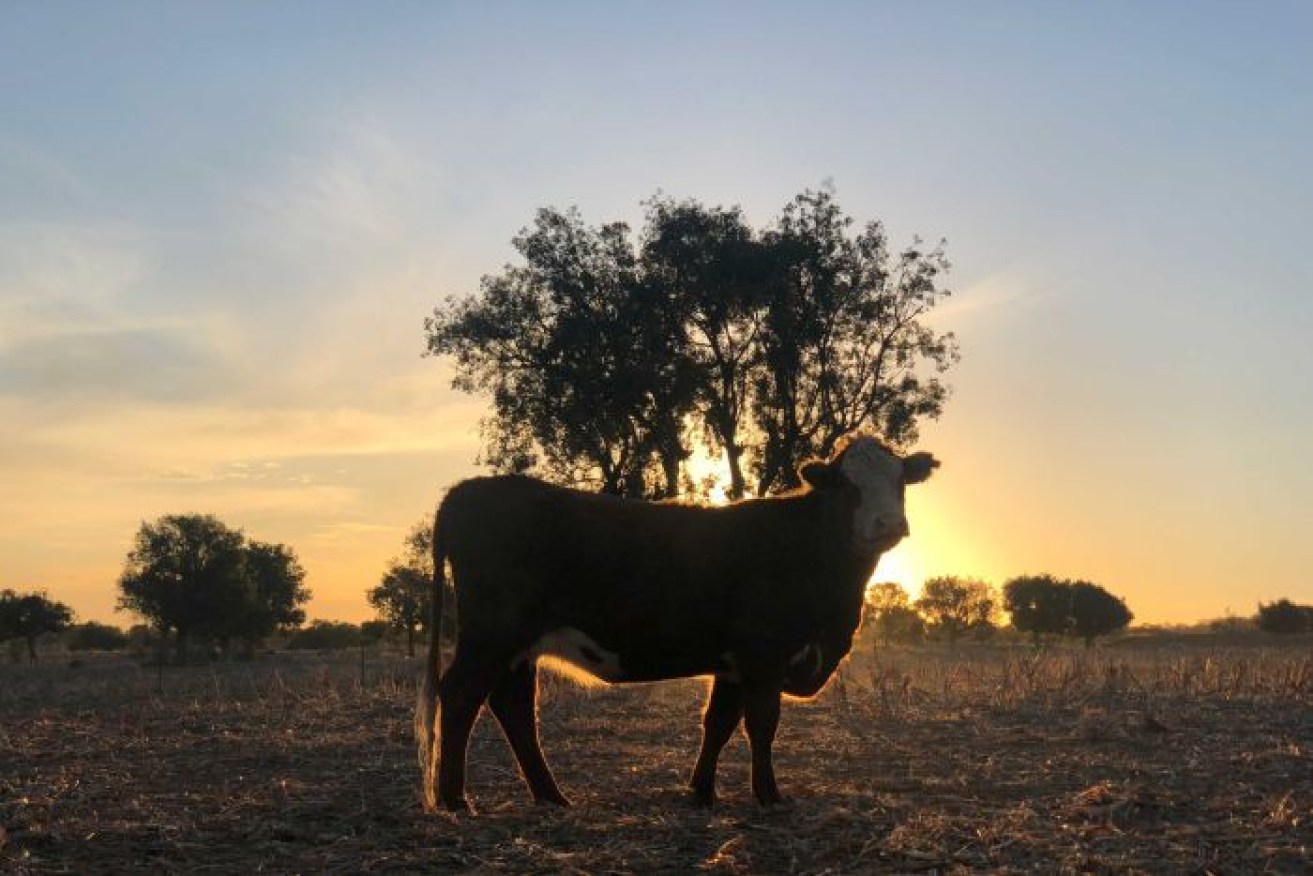Drought policy reform should focus on preparing for drier climate, farmers say

From 2020, about $100 million per year will be available with payments starting from July that year. Photo: Marty McCarthy
The agriculture sector is calling for an overhaul of drought policy that factors in a changing climate and ways to help farmers plan for and manage future dry periods.
Farmers have been hopeful of a new national approach to preparing for drought since former prime minister Malcolm Turnbull toured drought-affected communities in June.
Many farmers have planned for drought independent of government reform, but farmer Adam Williamson from Scone in the Hunter region of New South Wales said a national drought policy would help those left behind.
“We have seen the [leadership] shenanigans in Canberra over the last week, and they are irrelevant to us.
“We are looking after ourselves out here — that’s the way drought policy is for us.”

Wellington grazier Neil Cosier said his family of eight relies on the Farm Household Allowance. Photo: Marty McCarthy
Neil Cosier is a grazier from Wellington in central NSW and said his family of eight rely on the Farm Household Allowance, a welfare measure supporting families to keep food on the table during the drought.
However, Mr Cosier said an ideal drought policy is one that helps him avoid becoming a victim of drought in the first place.
“When it gets to the point we can’t supplement-feed our stock any more, and sheep and cattle are dying, it is emotionally draining on all of us,” he said.
The president of the National Farmers Federation, Fiona Simson, agreed.
“We need to have a bigger focus on resilience so that when it gets drier and eventually ends up in drought — which inevitably it always does in Australia — they are better prepared,” Ms Simson said.
Hunter Valley viticulture consultant Liz Riley said a bigger investment in research and development should be a main focus for government so that industries can adapt their farming practices to a changing climate.
Ms Riley consults for wine producers in the Hunter Valley and said many producers she works with are focusing their efforts on learning to keep more moisture in the soil, for longer.
“Research and development investment that governments have made has underpinned some strategies that we have already come up with,” Ms Riley said.
A good balance book in drought
The federal government has some measures already in place to help farmers prepare for drought, but they are in their early days, and how effective they are in drought is only now being put to the test.
Special tax offset accounts announced in 2016, known as Farm Management Deposits (FMDs), have encouraged some farmers to store money in profitable years to use in tough ones, or when the drought breaks.
Nationwide, there is more than $5.6 billion in those accounts, half of which is held by farmers in Queensland and NSW.
That is down from $6.6 billion a month ago, indicating the reforms are already helping some farmers plan for drought.

Labor agriculture spokesman Joel Fitzgibbon said better assistance is required. Photo: ABC News
The Federal Labor agriculture spokesman, Joel Fitzgibbon, said FMDs only help farmers who already have money from a good season, and do not help those who have no cash flow this year.
“Farmers who have Farm Management Deposit accounts are not the same farmers as we see struggling on the 6 o’clock news,” Mr Fitzgibbon said.
“Those changes don’t support those who are struggling most, so the way we assist them is to help them embrace new methods to help them better drought-proof themselves.”
Mr Cosier agreed, saying he is not yet in a stable enough financial position to even have money to put away.
“But I can see they (FMDs) will be valuable in the future, because I could put $100,000 away in an account and when we have a drought I could use that money to buy hay,” he said.
Agriculture Minister David Littleproud said the extent to which farmers sign up for FMDs now depends on the banks.
“So that in the good times we are preparing to make sure that we can get through these droughts without the need for government assistance.”
The cost of drought
Over the past two decades, federal and state governments have been trying to move towards a model of drought support that will see farm businesses become more drought tolerant.
Emergency drought responses, where governments spend money helping farmers get by day to day, were becoming too expensive.
The federal government alone spent $2.6 billion on interest rate subsidies for drought-affected farmers between 2001 and the end of 2011.
While there are some calls from farmers to return to those types of measures, Richard Heath from the Australian Farm Institute has warned against it.
“The difficulty with those sorts of subsidies is that if everyone knows that those subsidies are available where there is a drought, then there is a disincentive to prepare for it in the first place,” Mr Heath said.
“But drought is a regular occurrence and it is going to happen more and more frequently.”
NSW Agriculture Minister Niall Blair knows the pressure governments are under when farmers need drought support, but he said the challenge is developing assistance measures that keep everyone happy.
“We are working against history in this space, because this [providing subsidies] is what governments have traditionally done,” Mr Blair said.
“Usually when people are in a predicament like they are in now they turn to government, and we find ourselves back to where we were some years ago, even though we were trying to move away from those kinds of responses.
“We can’t dismiss or provide perverse incentives for those farmers who have thought about this drought, for example by dipping into their own pocket to build more infrastructure on [their] farm.”

Scone farmer Adam Williamson said the drought is at “crisis point”. Photo: ABC News
Mr Williamson agreed, arguing that ad hoc drought responses can have long, unintended consequences.
“An interest rate subsidy is the last thing we need,” he said.
“It could drive up the price of land, for example, to unsubstantial levels, and you’d see people under huge mortgage stress.”
Mr Heath said it is important that the federal government get the balance right between emergency measures in the short term, and planning measures in the long term.
The need for balance is one the new Prime Minister Scott Morrison picked up on during his day trip to drought-stricken Quilpie in south-west Queensland on Monday.
“It is about drought relief and drought recovery as well. Those two things need to go together,” Mr Morrison said.

Farmers are calling for the federal government to factor in climate change in a drought policy.
Climate question
Another thing became clear on that trip; that whatever drought policy the federal government devises, it will not factor in man-made climate change.
“I don’t think that’s part of this debate … It’s not a debate I’ve participated in a lot in in the past because I’m practically interested in the policies that will address what is going on here right and now,” Mr Morrison said.
That comment found support from Stephen Tully, the farmer whose property Mr Morrison visited.
“Whether it is climate change or it is completely irrelevant to everyone here, it’s still marginal,” Mr Tully said.
“People are hurting now. We need it fixed now.”
But there are many farmers who think the government needs to factor in climate change to its drought response.
“It needs to be at the forefront [of government policy]. It’s an ideologically poisonous area at the moment for a lot of people in the community, but things change,” Mr Williamson said.
–ABC








